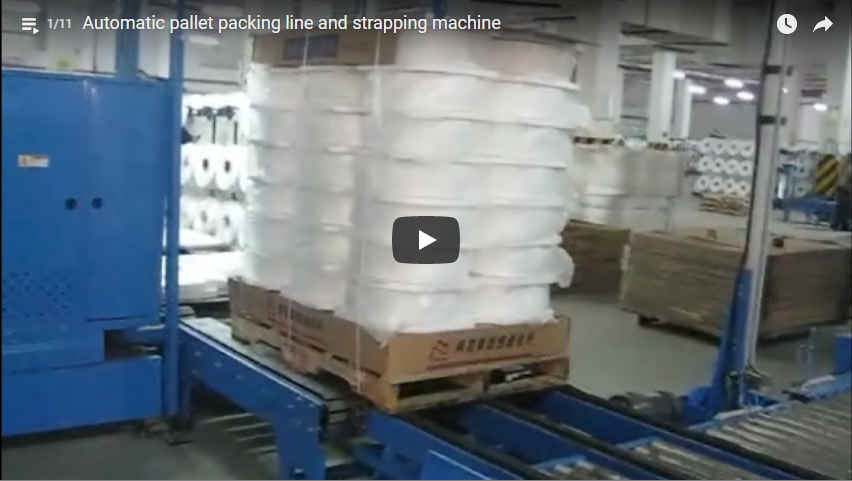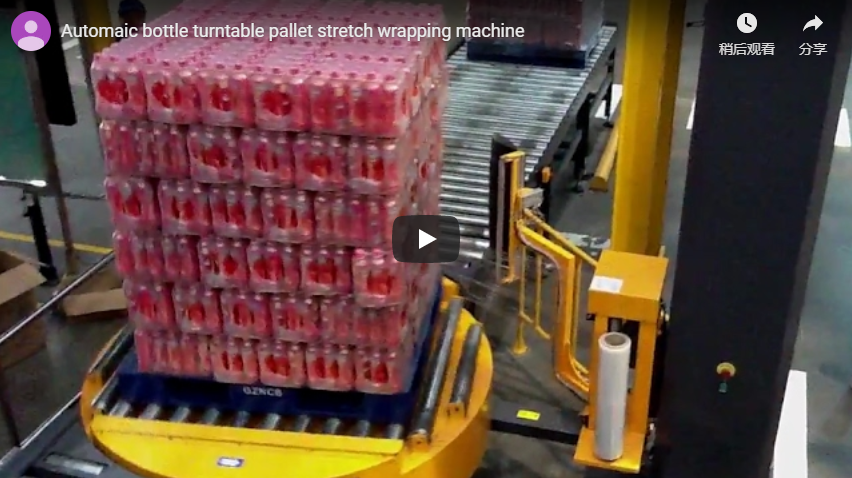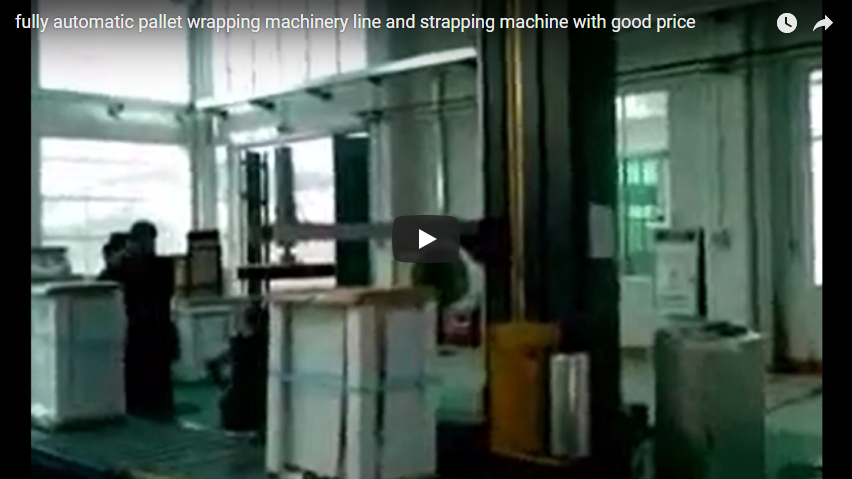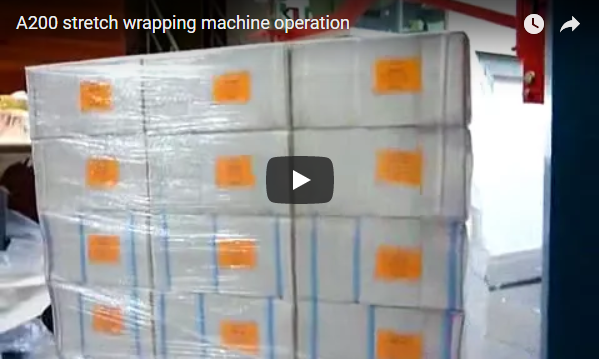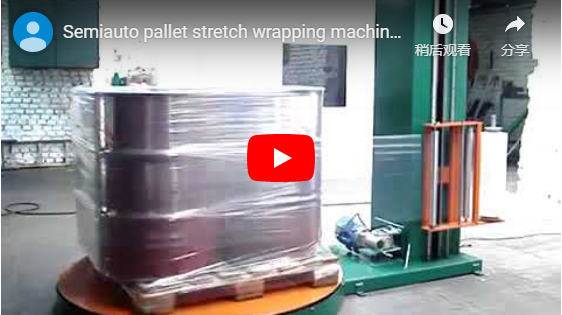Unpacking the Technology: A Deep Dive into Robot Pallet Wrapping Machines
In the relentless pursuit of efficiency within modern logistics and warehousing, the secure wrapping of palletised goods remains a cornerstone of product protection and load stability during transit and storage. While traditional turntable and rotary arm wrappers have served the industry well, a more flexible and increasingly popular solution is capturing attention: the robot pallet wrapping machine. This article delves into the technology, design, benefits, and user experience of these autonomous systems.
1. What Exactly is a Robot Pallet Wrapper?
Unlike their stationary counterparts which require pallets to be brought to the machine, robot pallet wrappers – also known as mobile stretch wrappers or self-propelled wrappers – are battery-powered, autonomous units that navigate around a stationary pallet. This fundamental difference grants them unparalleled flexibility, particularly for oversized, unstable, or exceptionally heavy loads that are difficult or impossible to place on a turntable. They are a key component in adaptable warehouse automation strategies.
2. The Inner Workings: How Robot Wrappers Operate
The operational principle is elegantly simple yet technologically sophisticated:
- Positioning: The operator manually guides the robot wrapper to the starting position next to the pallet load.
- Film Attachment: The stretch film is manually attached to the base of the pallet load.
- Programming: Using an intuitive control panel or Human-Machine Interface (HMI), the operator selects pre-programmed wrapping parameters or inputs custom settings. This includes the number of top and bottom wraps, ascent/descent speed, film tension, and pre-stretch percentage.
- Autonomous Wrapping: Once initiated, the robot autonomously circles the pallet. A guide wheel or sensor system typically traces the edge of the pallet or follows the floor, ensuring consistent distance and overlap.
- Vertical Movement: Simultaneously, the film carriage travels up and down a vertical mast, applying the stretch film according to the programmed pattern. Advanced sensors often detect the top height of the load automatically.
- Film Cutting & Completion: Upon cycle completion, many models feature automatic film cutting, while others require manual cutting. The machine stops automatically.
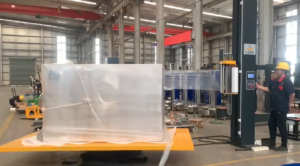
3. Deconstructing the Machine: Key Components
Understanding the core components helps appreciate the machine's capabilities:
- Chassis and Drive System: Forms the base, housing the wheels (often non-marking polyurethane), electric drive motors, and the steering mechanism guided by a tracing wheel or advanced sensors.
- Mast: The vertical structure supporting the film carriage. Its height dictates the maximum wrapping height achievable.
- Film Carriage: This critical assembly holds the stretch film roll. It incorporates rollers and controls for:
- Pre-Stretch: A vital mechanism (often powered, known as PPS - Power Pre-Stretch) that elongates the film before application. Common ratios range from 150% to over 300%, meaning 1 metre of film can be stretched to cover 2.5 to 4 metres of pallet surface. This significantly reduces film consumption and cost while improving load containment force.
- Tension Control: Ensures the film is applied with the correct tightness, adaptable for different load types.
- Power System: Typically relies on deep-cycle rechargeable batteries (AGM or Lithium-ion options may be available), providing hours of operation per charge. An onboard or separate battery charger (compatible with standard 110V or 220V AC outlets) is included.
- Control Panel (HMI): The user interface for setting parameters, viewing machine status, diagnostics, and selecting wrap programs. Modern HMIs are often touchscreen and user-friendly.
- Safety Features: Essential elements including emergency stop buttons, safety bumpers that halt motion upon contact with an obstacle, flashing lights, and audible alerts during operation.
4. Technical Specifications: A Data-Driven Overview
While specifications vary between models, here are typical ranges for robot pallet wrappers:
- Maximum Wrapping Height: 2000mm - 2800mm (78" - 110"), often adjustable.
- Pallet Size Compatibility: Virtually unlimited length and width (minimum usually around 600mm x 600mm).
- Pallet Weight Capacity: Not limited by the machine itself, as the pallet remains stationary on the floor.
- Machine Speed: Variable travel speed, often 60-90 metres per minute (approx. 1.0 - 1.5 m/s or 3.5 - 5.5 km/h).
- Film Pre-Stretch: Powered systems typically offer adjustable ratios up to 250% or 300%.
- Film Type: Designed for standard LLDPE stretch film rolls, commonly 500mm (20") width, with a standard 76mm (3") core diameter.
- Battery Autonomy: Can range from 100 to over 250 pallets per charge, heavily dependent on pallet size, wrap pattern, and battery type/condition.
- Required Working Area: Needs clearance around the pallet, typically 1100mm - 1300mm (43" - 51").
5. Key Advantages: Why Choose a Robotic Solution?
Robot pallet wrappers offer compelling benefits:
- Unmatched Flexibility: The primary advantage. Wrap loads of any size, weight, or shape, anywhere in the facility. Ideal for unstable or oversized goods.
- Space Efficiency: No dedicated floor space required as with turntable machines; can be stored away when not in use.
- Optimised Film Consumption: Power pre-stretch systems drastically reduce the amount of film needed per pallet compared to manual wrapping or basic mechanical stretch systems, leading to significant cost savings and reduced environmental impact.
- Consistent Wrap Quality: Automation ensures repeatable, consistent wrapping patterns and tension, enhancing load stability and reducing product damage during transit.
- Improved Ergonomics and Safety: Eliminates the strenuous and potentially hazardous manual task of walking backward around a pallet while applying film. Reduces risk of repetitive strain injuries.
6. Design, Structure, and Manoeuvrability
These machines are designed for industrial environments. Key structural aspects include:
- Robust Construction: Steel frame and mast for durability.
- Compact Footprint (Machine itself): Designed to navigate reasonably tight spaces around a pallet.
- Ergonomic Controls: Easy-to-reach control panels and steering handles.
- Sensor Integration: Carefully placed sensors for navigation, height detection, and safety are integral to the design.
7. The User Experience: Operation and Maintenance
From a user perspective, robot wrappers are generally straightforward:
- Ease of Use: Modern HMIs simplify programming. Setting wrap parameters (top/bottom wraps, tension, speed) is typically intuitive.
- Battery Management: Requires a disciplined charging routine. Battery health indicators are standard. Depending on usage, charging might be needed daily or every few shifts.
- Film Loading: Designed for quick and easy roll changes.
- Maintenance: Routine checks involve inspecting wheels, the tracing sensor/wheel, film carriage rollers, and battery connections. Preventative maintenance schedules are usually provided by the manufacturer.
8. The FHOPE Robot Pallet Wrapper in Action
The FHOPE model highlighted exemplifies the core strengths of this technology. As noted, it places no practical limit on pallet size or weight, operating in a self-running mode for high effectiveness. Key features include:
- Automatic Stop: Ensures the machine halts safely upon cycle completion or if an issue arises.
- Pre-stretch Function: Incorporates the crucial film-saving pre-stretch capability, directly impacting material costs.
- Battery Power: Operates untethered, with battery systems compatible with both 110V and 220V charging environments.
The embedded video below provides a visual demonstration of the FHOPE robot pallet wrapping machine in operation, showcasing its movement and wrapping process:
Watching the machine navigate the pallet clearly illustrates the flexibility and automation these wrappers bring to the packaging line.
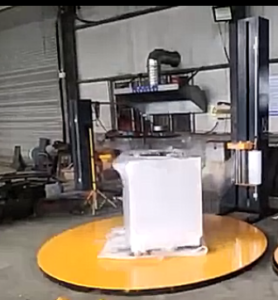
9. Making the Right Choice
Selecting a robot pallet wrapper involves considering factors like:
- Maximum load height needed.
- Required throughput (pallets per hour/day).
- Battery life requirements based on shift patterns.
- Desired level of automation (e.g., automatic film cut/attach).
- Budget and projected ROI, factoring in film savings.
10. Conclusion: Wrapping Up the Future
Robot pallet wrapping machines represent a significant step forward in end-of-line packaging automation. Their flexibility, efficiency, and ability to handle challenging loads make them an increasingly valuable asset in warehouses and distribution centres worldwide. By optimising film usage, improving load security, and enhancing worker safety, these mobile robots are effectively unwrapping new levels of productivity in logistics operations.

